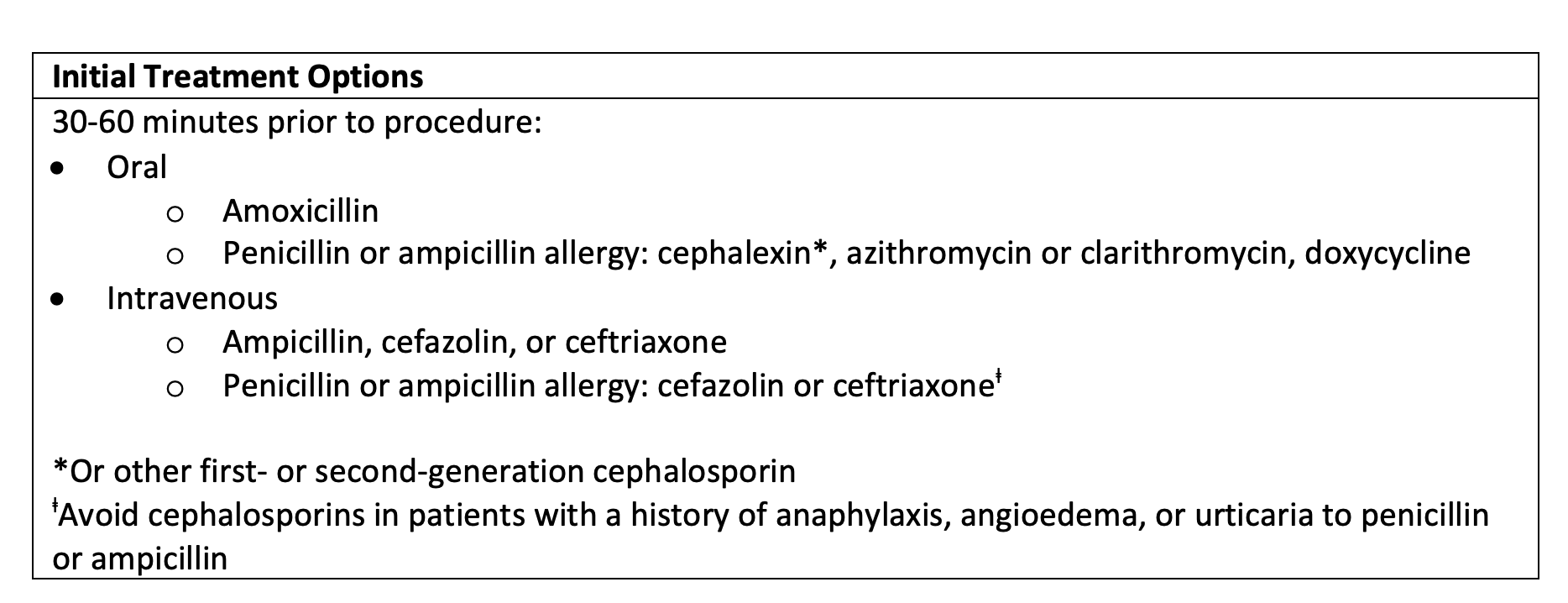New Recommendations for Antibiotic Prophylaxis Prior to Dental Procedures
The American Dental Association (ADA) has updated patient profiles on who should be indicated for antibiotic prophylaxis.
Antimicrobial use within the realm of dentistry has received growing attention with regards to both therapeutic and prophylactic therapy, as evidenced by recently updated ADA antibiotic stewardship recommendations.1 General and specialty dentists are the third highest outpatient prescribers for antibiotics, and data from 2017 to 2019 suggest 35% to 80% of these antibiotic prescriptions are either not indicated or suboptimal.2
Following guidance from the American Academy of Orthopedic Surgeons (AAOS) and the American Heart Association (AHA), the ADA has established recommendations in the past for antimicrobial prophylaxis prior to dental procedures in patients with prosthetic joint implants and patients thought to be at increased risk for developing endocarditis.1 Additionally, the ADA developed guidelines for the management of dental pain and intra-oral swelling that largely recommended against the use of antibiotics for the treatment of infections without systemic involvement, favoring dental intervention in immunocompetent patients.2
The ADA provided updated recommendations for antimicrobial prophylaxis prior to dental procedures in May of 2021.3 These recommendations highlight that there is a relatively small subset of patients that are indicated to receive antibiotic prophylaxis when compared to older versions of guidelines published by AAOS and AHA (Table 1).3 The AHA’s 2021 scientific update reinforced that antibiotic prophylaxis is only indicated for patients at the highest risk of infective endocarditis, citing that risks of adverse effects and development of drug-resistance likely outweighs benefits of prophylaxis in many patients that were historically included in previous guidelines.3 Additionally, these recommendations apply only to dental procedures in which there is manipulation of the gingival tissue or the periapical region of teeth, or perforation of the oral mucosa.3
Table 1 – Indications for Antimicrobial Prophylaxis4

For patients with prosthetic joint implants, antibiotic prophylaxis prior to dental procedures is typically not warranted and should only be considered following consultation with the patient and the orthopedic surgeon.3
AHA recommends amoxicillin for patients that qualify for antibiotic prophylaxis and who can tolerate oral medications (Table 2).4 The ADA no longer recommends clindamycin for patients with a history of penicillin allergies due to more frequent and serious adverse effects associated with clindamycin compared to other prophylactic options, including C. difficile infections.3 From 2009 to 2015, the Minnesota Health Department found that 15% of patients prescribed an antibiotic with subsequent community-acquired C. difficile infection were treated by their dentist.5 Patients receiving antibiotics from their dentist were significantly more likely to have received clindamycin when compared to other providers (50% versus 10%).5 For patients with penicillin allergies, first- or second-generation cephalosporins, azithromycin, clarithromycin, or doxycycline are now the suggested alternatives.3 If patients are already receiving antibiotics for another indication and are candidates for prophylaxis, it is advised that the dentist select a different class of antibiotics than the one the patient is currently taking.3
Table 2 Antimicrobial Prophylaxis Treatment Options4

For other patient populations, the ADA cites that there is no general guidance to promote the use of prophylactic antibiotics prior to a dental procedure except for individuals with extenuating circumstances, and where the prescription is written by the patient’s surgeon or treating physician.3
Brandon Garcia, PharmD, PGY2, is an infectious diseases pharmacy resident at the Philadelphia College of Pharmacy in Philadelphia, Pa.
Madeline King, PharmD, BCIDP, is an infectious diseases clinical pharmacist and assistant professor of clinical pharmacy at Philadelphia College of Pharmacy in Philadelphia, Pa.
References
1. American Dental Association. Oral health topics: Antibiotic stewardship. American Dental Association website. September 29, 2020. Accessed July 20, 2021. https://www.ada.org/en/ member-center/oral-health-topics/antibiotic-stewardship.
2. Lockhart PB, Tampi MP, Abt E, et al. Evidence-based clinical practice guideline on antibiotic use for the urgent management of pulpal- and periapical-related dental pain and intraoral swelling: A report from the American Dental Association. J Am Dent Assoc. 2019;150(11):906-21.e12.
3. American Dental Association. Oral health topics: Antibiotic prophylaxis prior to dental procedures. American Dental Association website. September 29, 2020. Accessed July 20, 2021. https://www.ada.org/en/ member-center/oral-health-topics/antibiotic-stewardship.
4. Wilson WR, Gewitz M, Lockhart PB, et al. Prevention of Viridans Group Streptococcal Infective Endocarditis: A Scientific Statement From the American Heart Association. Circulation. 2021:Cir0000000000000969.
5. Bye M, Whitten T, Holzbauer S. Antibiotic Prescribing for Dental Procedures in Community-Associated Clostridium difficile cases, Minnesota, 2009–2015. Open Forum Infect Dis. 2017;4(Suppl 1):S1. Published 2017 Oct 4.
